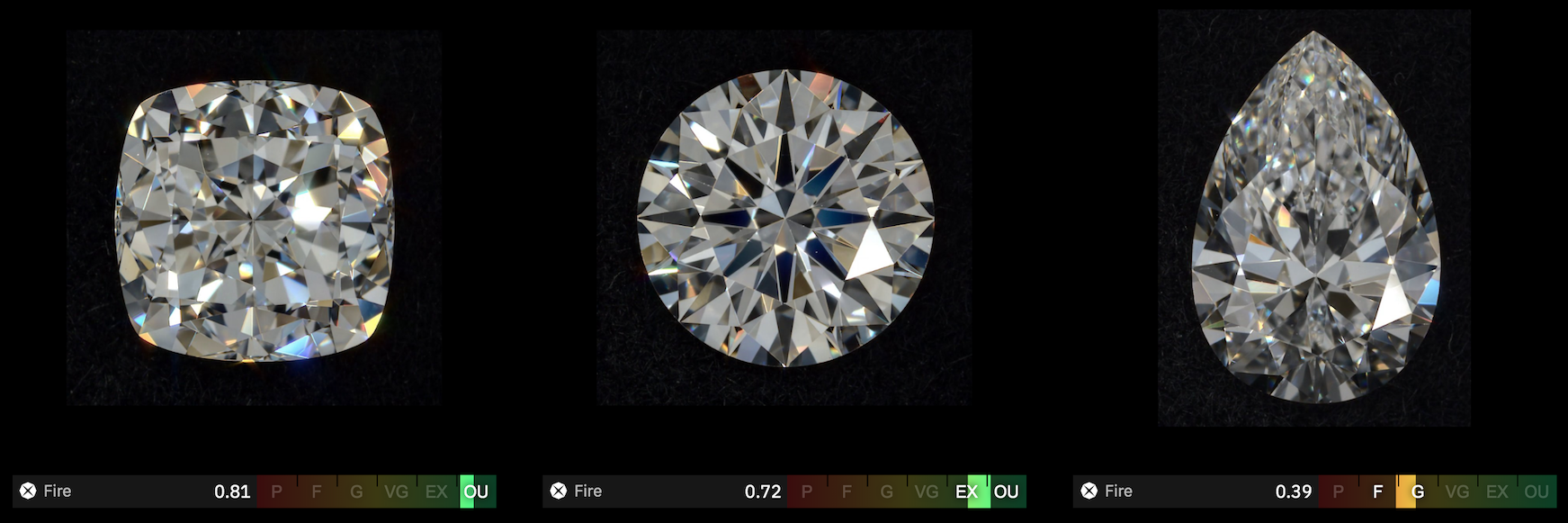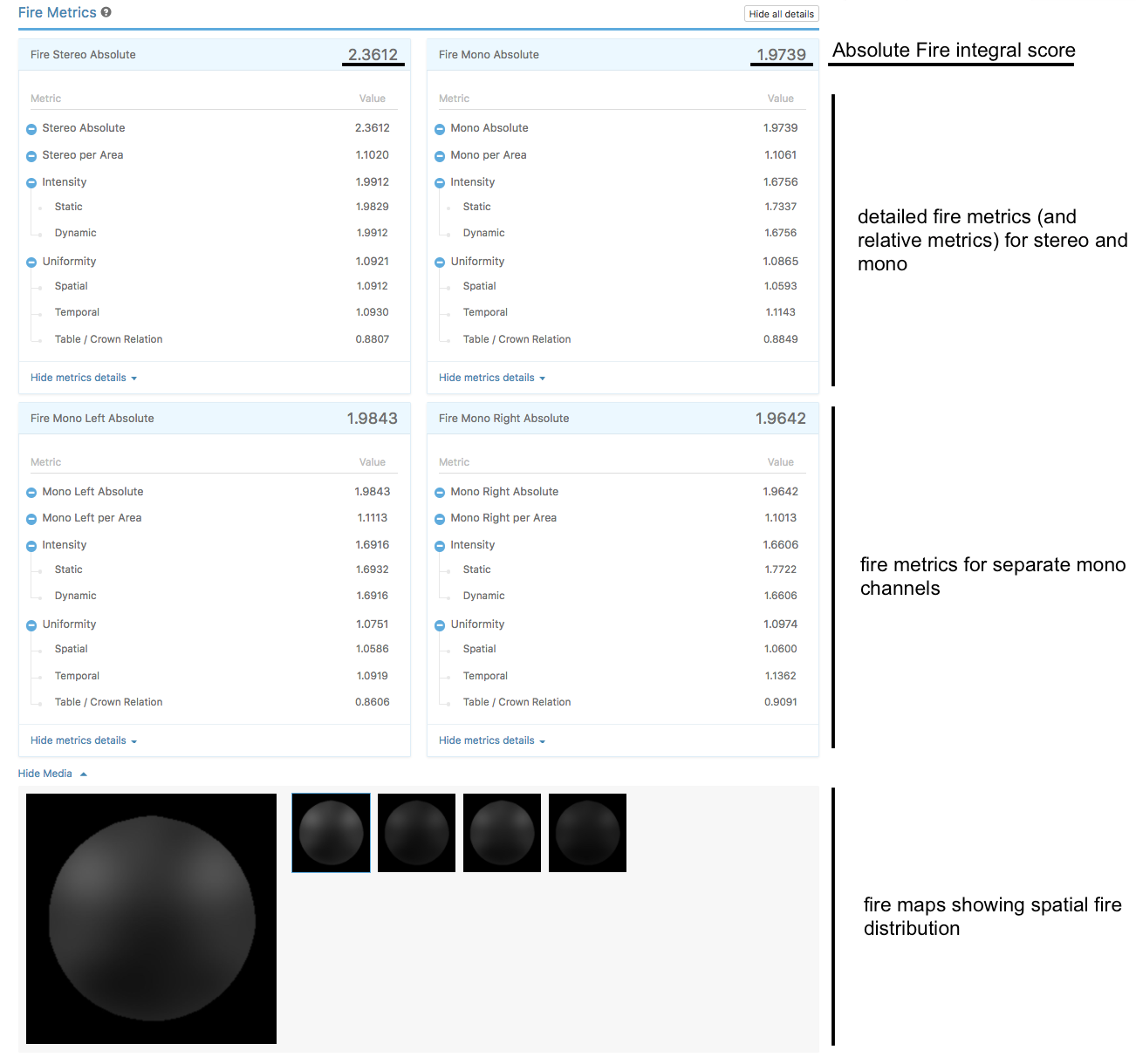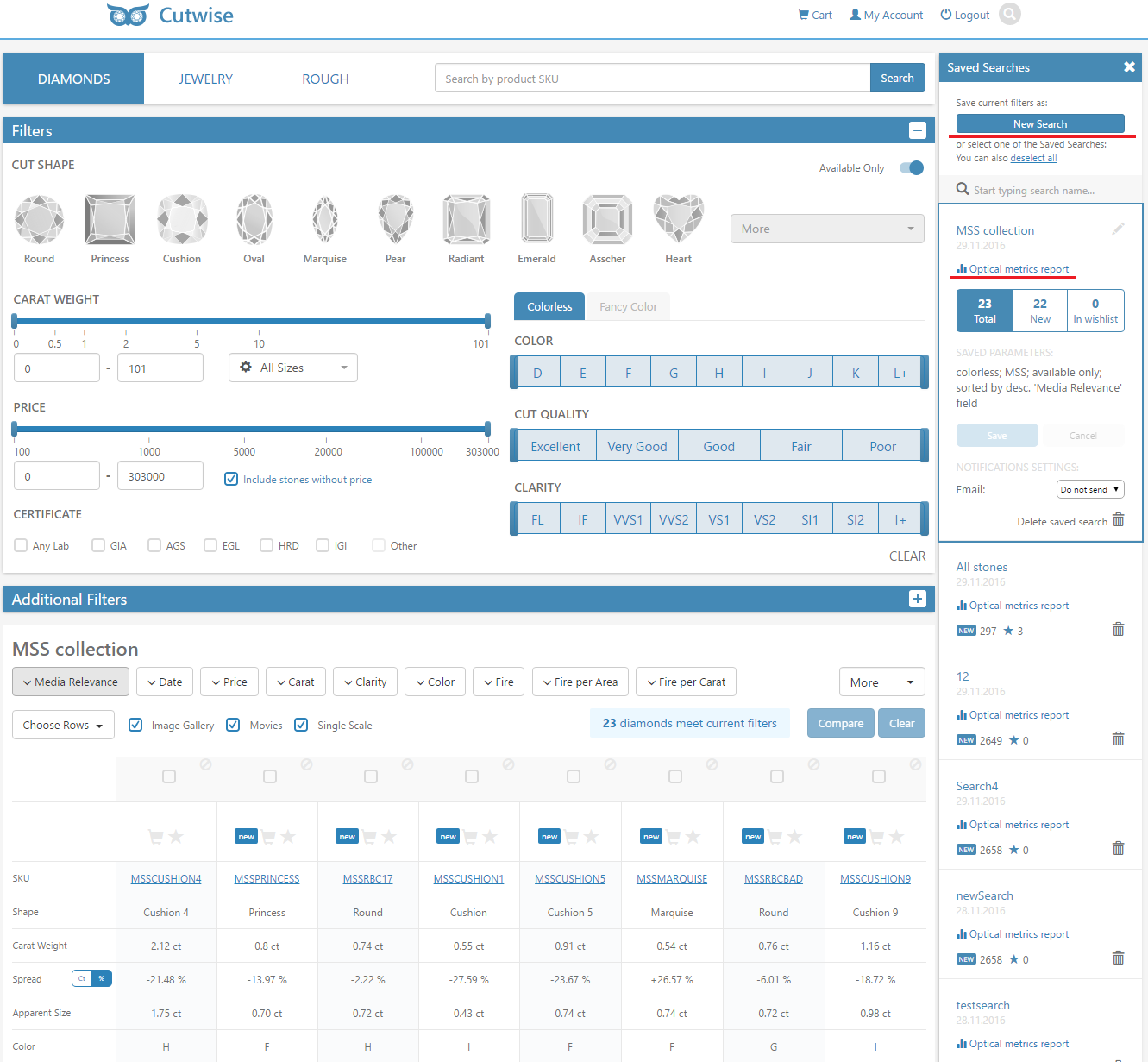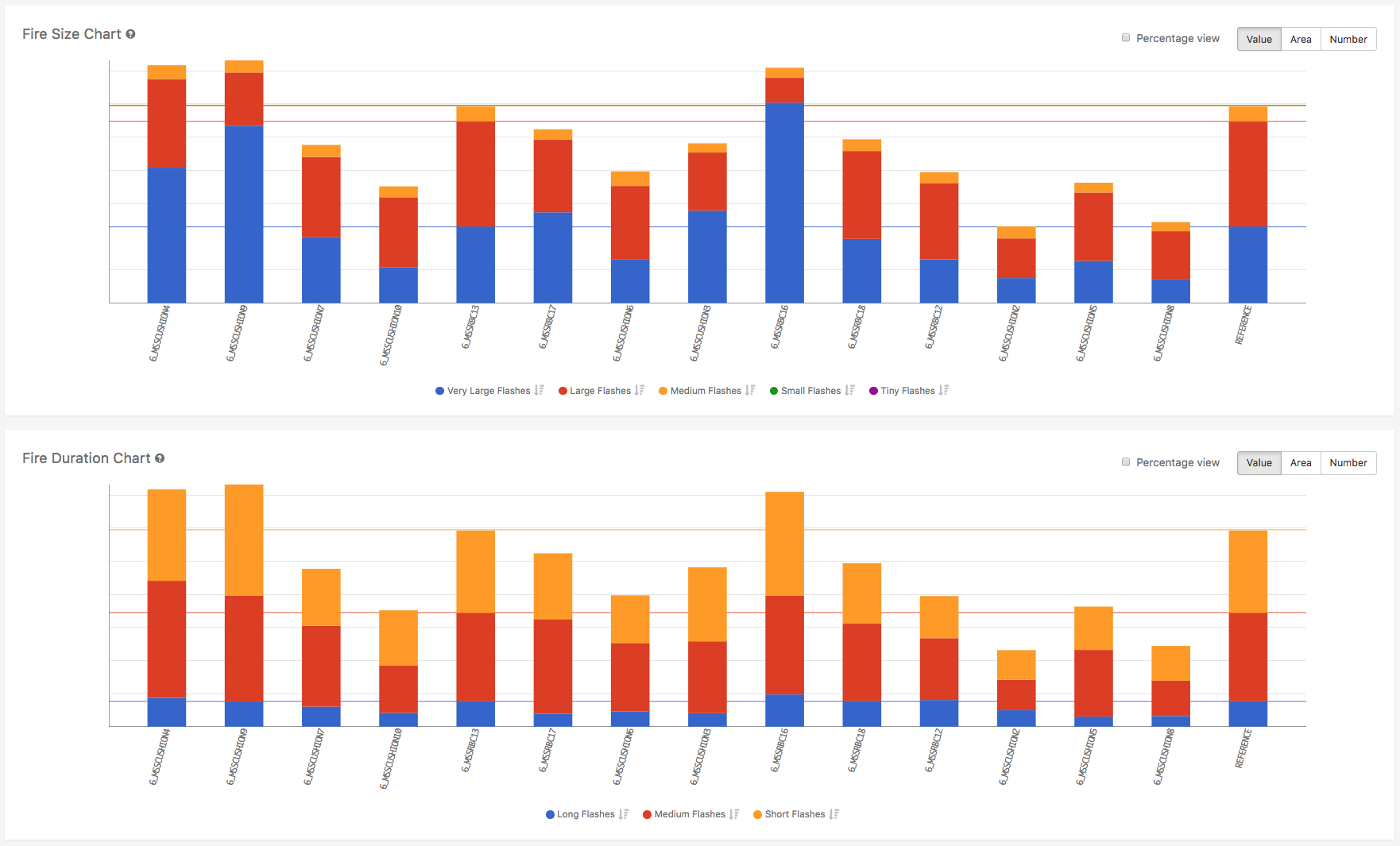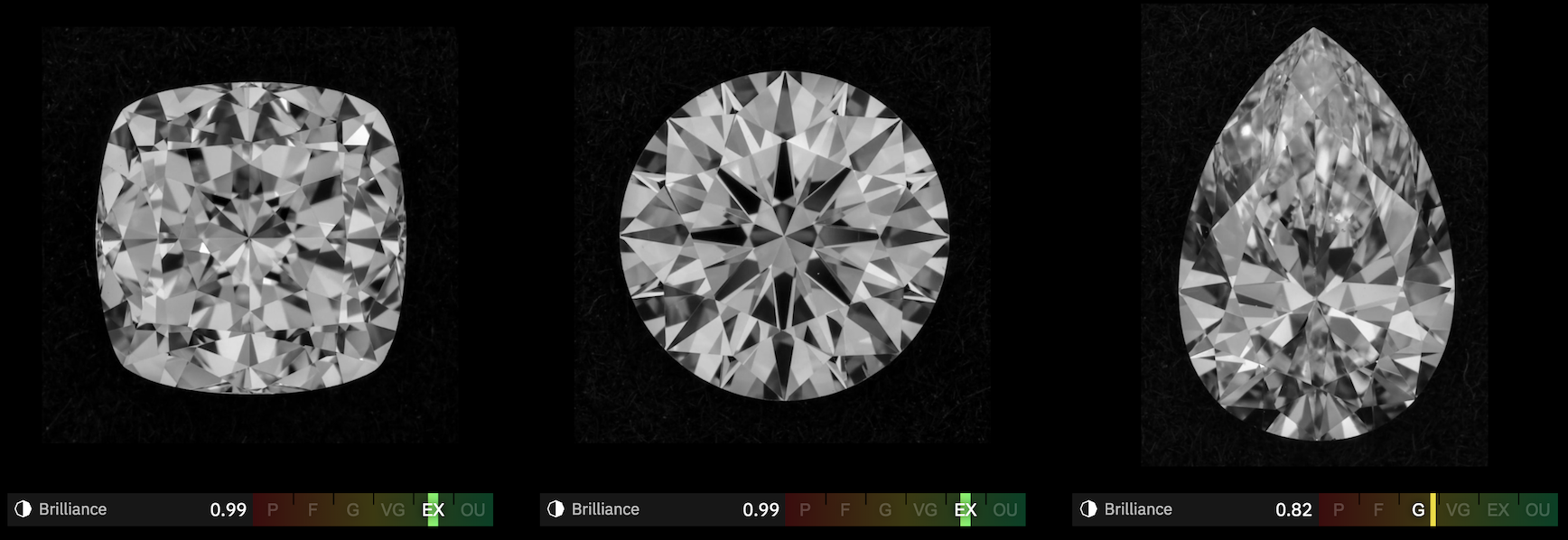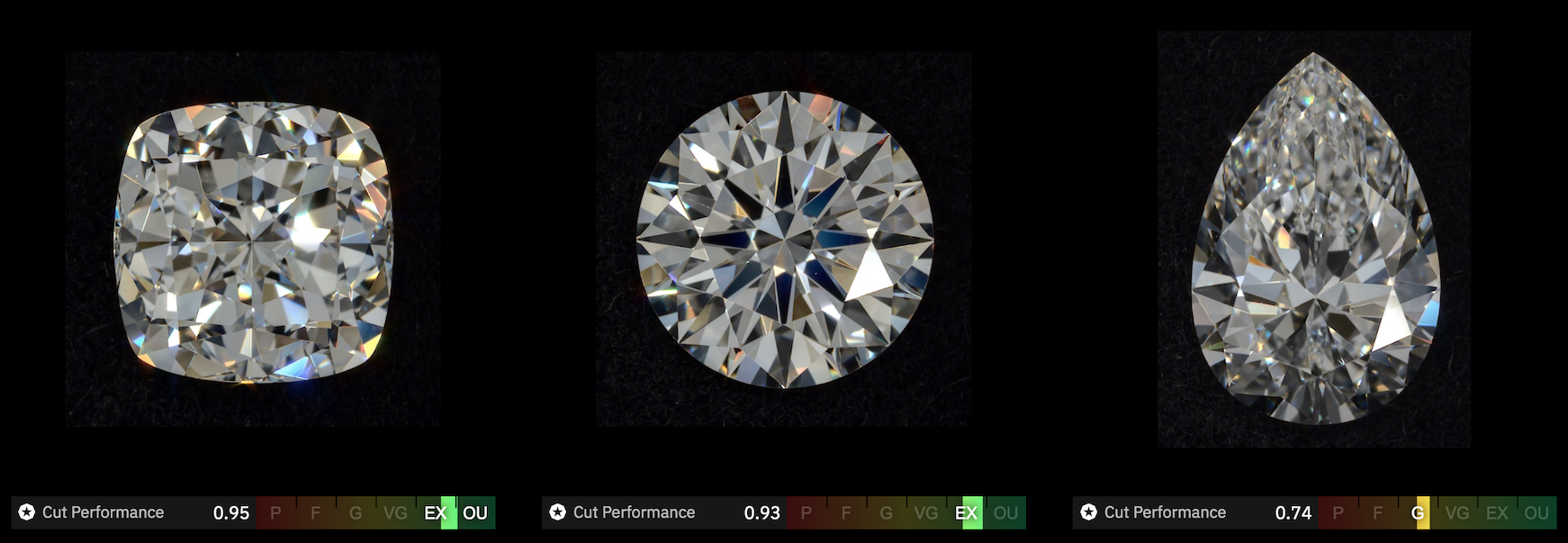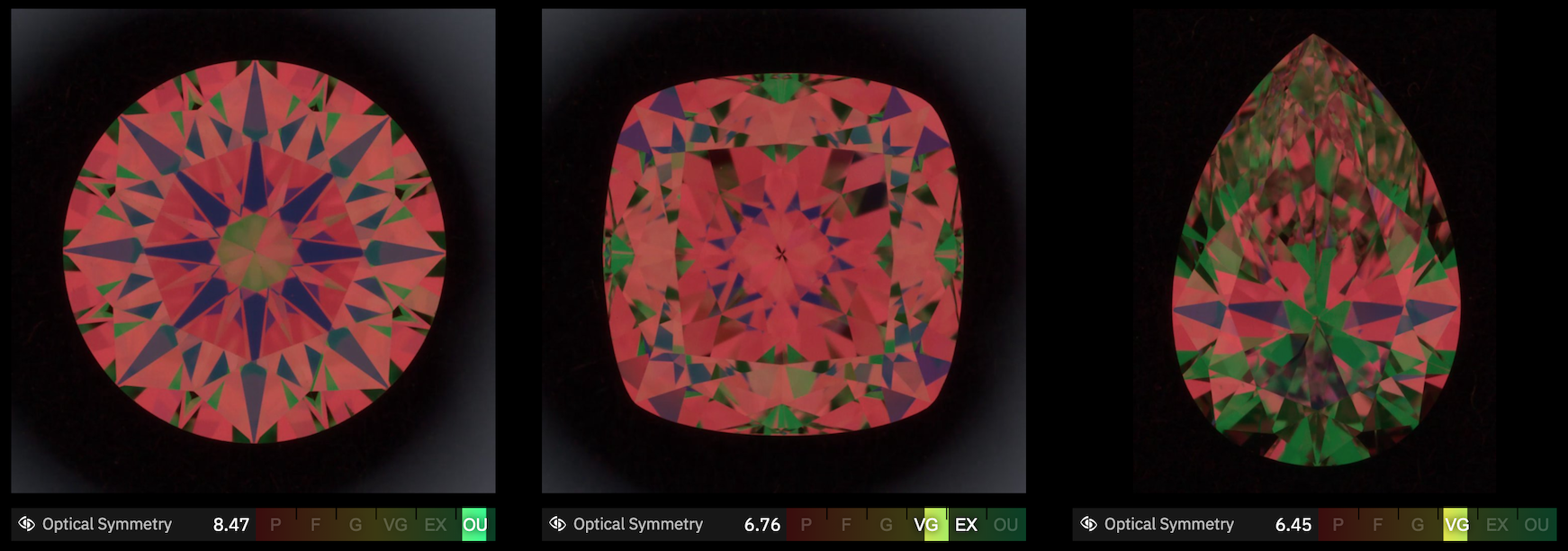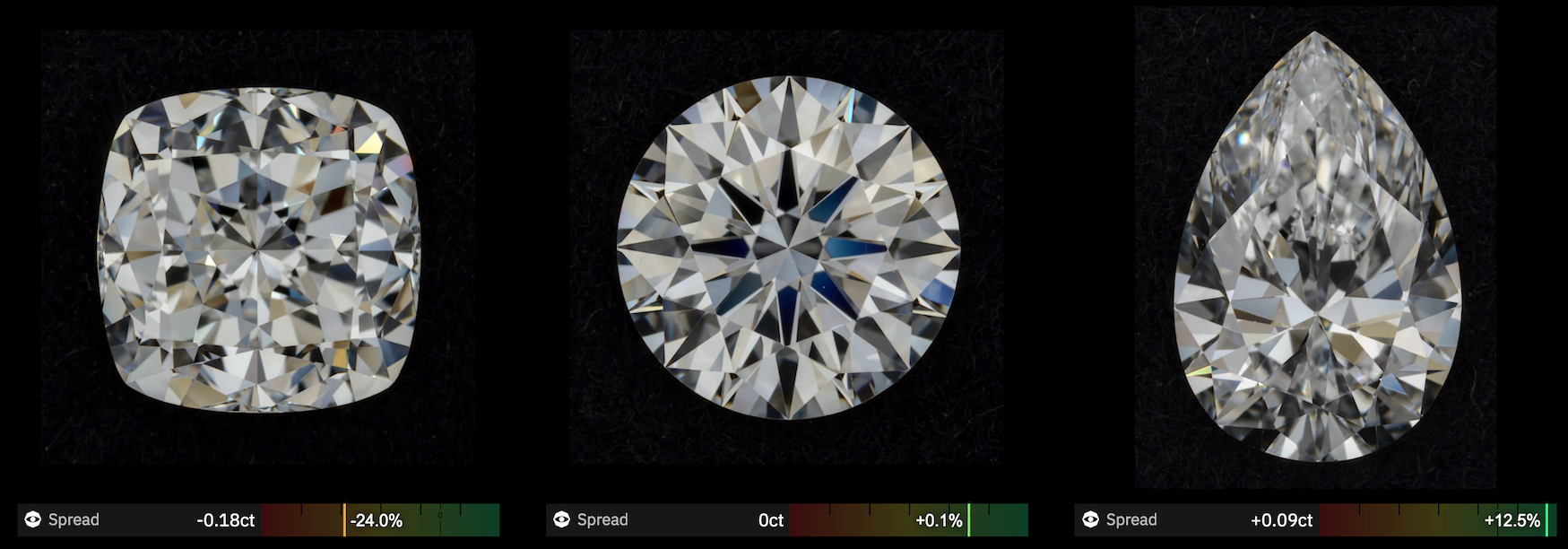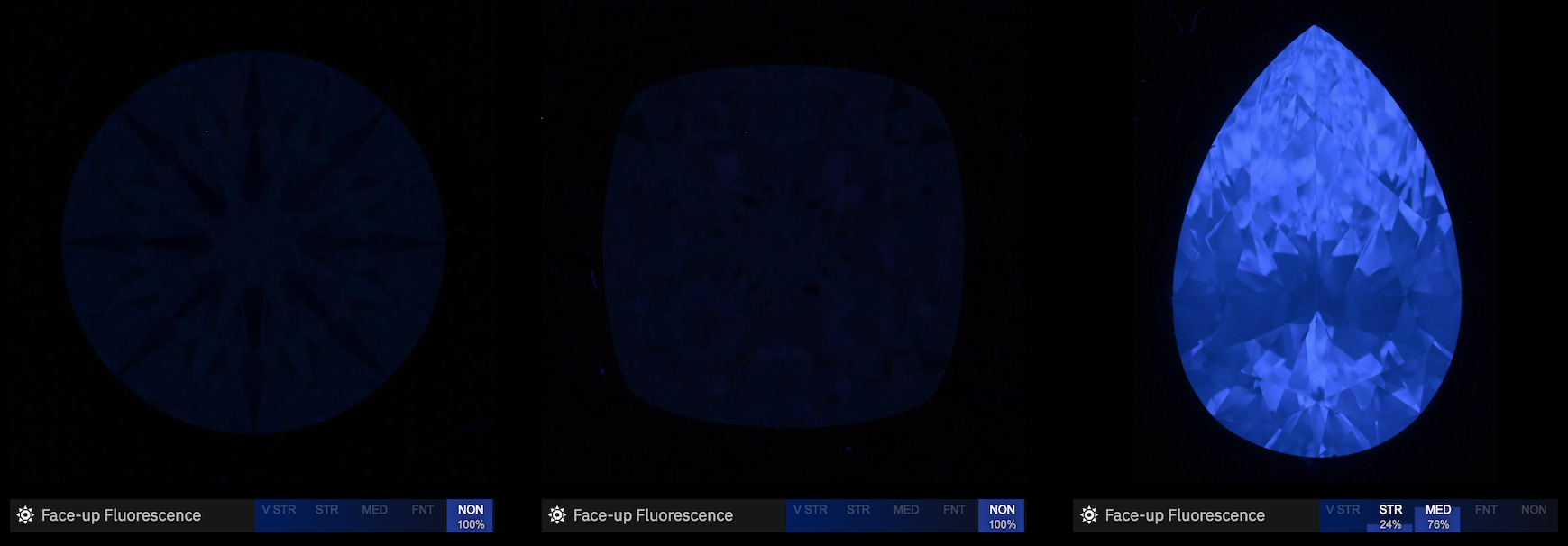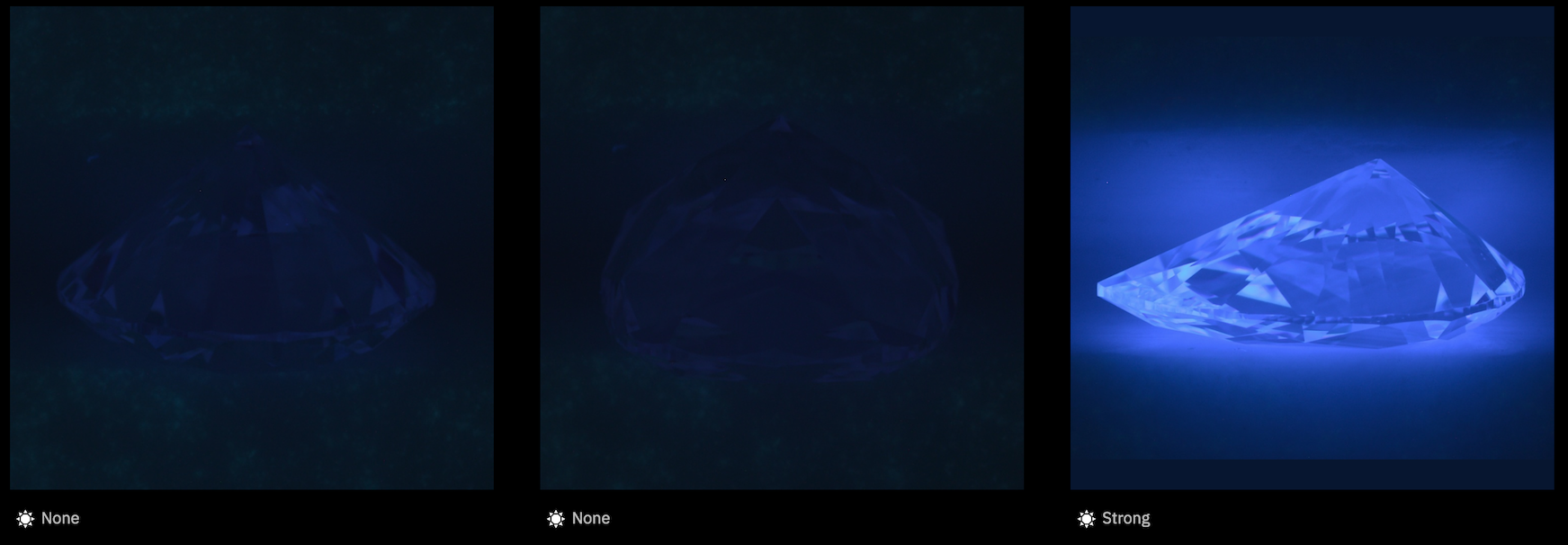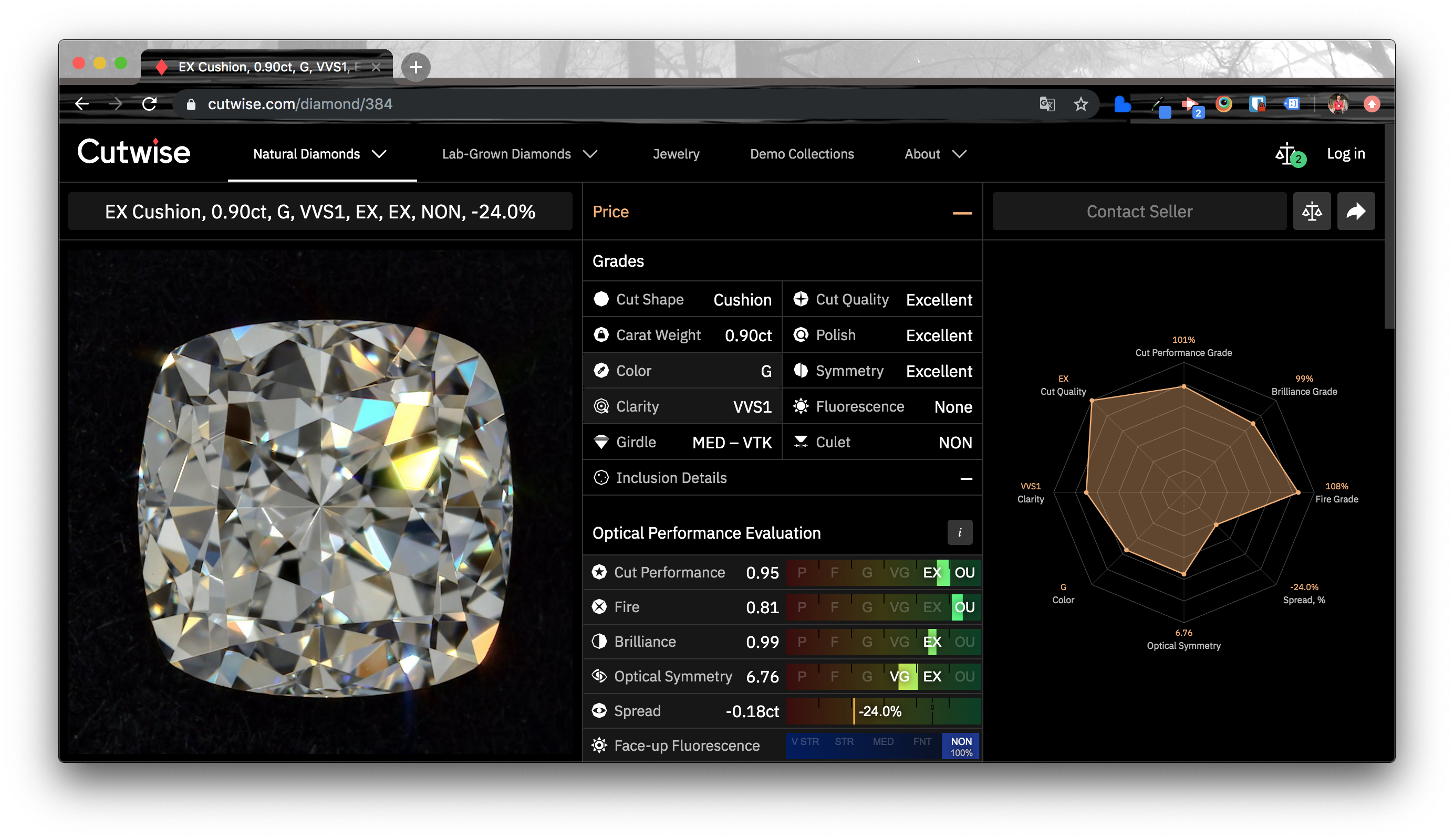Page History
Often diamond beauty could be described in terms of the following phenomena:
BrightnessFire
- Brilliance
- Symmetry
- FluorescenceScintillation
- FireSize
Quantitative description of these phenomena is what we call diamond beauty metricsOptical Performance Evaluation.
Our technologies and algorithms allow to capture videos and automatically calculate Optical Performance Evaluation:
- Based on human perception, including stereo vision.
- Allow to compare different shapes.
- Consider diamond size (as in real life).
Fire
...
Fire is an ability of a gem to produce colored flashes seen usually under point light source conditions. Fire is probably the most appealing optical effect in a diamond.Quantitative description of fire involves frequency (number) of colored flashes, their intensity and colorfulness, spatial and temporal distribution.colored flashes that we observe in colorless diamond. Perceived Fire strength depends on colored flashes quantity, size, duration, brightness, saturation and distribution.
Fire is the simultaneous (local) contrast of colour that is observed in a diamond. The contrast of this coloured image depends on surrounding areas and on the duration of a coloured flash.
If the coloured flash is too fast the eye is not able to comprehend its colour and such a flash is perceived as scintillation. If the coloured flash lasts too long its total contrast is less than the sum of the contrast of two separate shorter coloured flashes of half the lifetime of the initial flash.
For a flash to be perceived as coloured it should not be neither too fast, too small or too bright; when combined these factors make a coloured flash appears to a human as scintillation and not a fire flash.
Read more on Fire and other optical performance in our Australian Gemologist article "How diamond performance attributes: Brilliance, Scintillation and Fire depend on human vision features":
| View file | ||||
|---|---|---|---|---|
|
Fire metrics in Cutwise
We arranged Fire metrics in the following high-level categories:
- Fire Integral Metric (answers to the question "which stone has better Fire ability")
- Fire Intensity Metric (answers to the question "which stone has more Fire")
- Fire Uniformity Metric (answers to the question "which stone has better distributed Fire")
All of these metrics could be measured in stereo (binocular) and mono conditions. Stereo metrics are used as default for display, stones filtration and sorting.
Beside the absolute values of Fire metrics we calculate relative metrics of "Fire per area" which describe the cut quality and abstract from the stone size.
Absolute metrics are normalized to MSSRBC13 as an excellent round reference sample.
Fire Intensity metrics are measured in Dynamic as well as Static condition. Fire Intensity Dynamic shows amount of fire stone shows during small tilting moves. Fire Intensity Static shows mean of fire amount in random static stone position.
Fire metrics display on a stone page
Fire metrics report (for a stone list)
To get to a fire metrics report you need to
- log in to Cutwise, you could use login using Facebook
- create a new search and save it (in the left sidebar), you could add selected stones to your wish list to get report for them only
- click "Optical metrics report" link for your saved search
Fire metrics report contains the following data types
- Bar charts for fire metrics (integral, intensity and uniformity charts)
- Stacked bar charts for histograms (flashes size and flashes duration histograms)
- Fire properties distribution chart (flashes average size and flashes average duration)
Fire / Brilliance scatter chart contains Fire Stereo (Absolute), Brilliance and Optical Performance metrics.
Fire intensity chart contains four fire intensity metrics (Dynamic Stereo, Dynamic Mono, Static Stereo and Static Mono) showing amount of fire in different viewing conditions. Fire integral and fire intensity charts has the switch between absolute metric and relative metrics (per carat and per area).
Fire uniformity chart contains spatial uniformity, temporal uniformity and integral uniformity metrics.
Fire flashes histograms contains two charts, one histogram showing flashes size distribution and the other one - flashes duration distribution. You could switch between measurement units - number of flashes, flashes area and flashes value (area * intensity). It is possible to switch between absolute quantities and relative quantities in percents.
Fire properties distribution scatter chart shows each stone in axes of average relative flashes size and duration. Small flashes - left side and large flashes - right side. Fast flashes - bottom side and slow flashes top - side. Shapes marked with color by default.
Topmost controls of a fire metrics report contains
- a switch between All stones in the current list / new stones only / stones added to wish list
- a sorting switch, sorting applies to all the charts
- saved searches panel in the right sidebar containing the option to return to a general listing.
Brilliance
Diamond brilliance is an illusion caused by the fact that the perceived brightness of the object significantly exceeds its actual brightness. This may occur when several parts of the object with different brightness are observed within a single space-time domain. In the case of a diamond, these parts are its virtual facets. Two virtual facets belong to the same space-time domain when an observer can not separate them due to spatial or temporal limitations of the sense of vision.
Cut Performance
Cut performance is an aggregate diamond characteristic, based on both fire and brilliance. It shows how vibrant the diamond is.
Optical Symmetry
Optical symmetry shows how symmetric diamond looks when viewed face-up. Score is calculated from crown (ASET) image for fancy shapes and crown (ASET) and pavilion (Hearts) images for round shapes.
Spread
Diamond with the same weight can have different visible size depending on their shape. This visual size is described by spread characteristic. Positive spread means that diamond looks larger than Tolkowsky round with same weight, negative means opposite.
Fluorescence
Face-up Fluorescence score show percentages of diamond area that belongs to different fluorescence grade for diamond image taken face-up in UV 385nm light.
Pavilion Fluorescence images are similar to ones that are used in laboratories to grade fluorescence. They are captured under UV 385nm light.
Optical Performance Scores in Cutwise
Scores Description
Absolute score (value)
Shows absolute characteristic of diamond (how much fire or brilliance is it).
Relative score (grade)
Valid for Spread, Fire, Brilliance and Cut Performance. Shows comparison to standard Tolkowsky round with the same visual area. For example:
Fire absolute = 1.4
Fire Score for Tolkowsky with same area 1.5
Relative = 1.4/1.5 = 0.93
Grade is calculated from Relative score. Grade marker width shows value accuracy.
